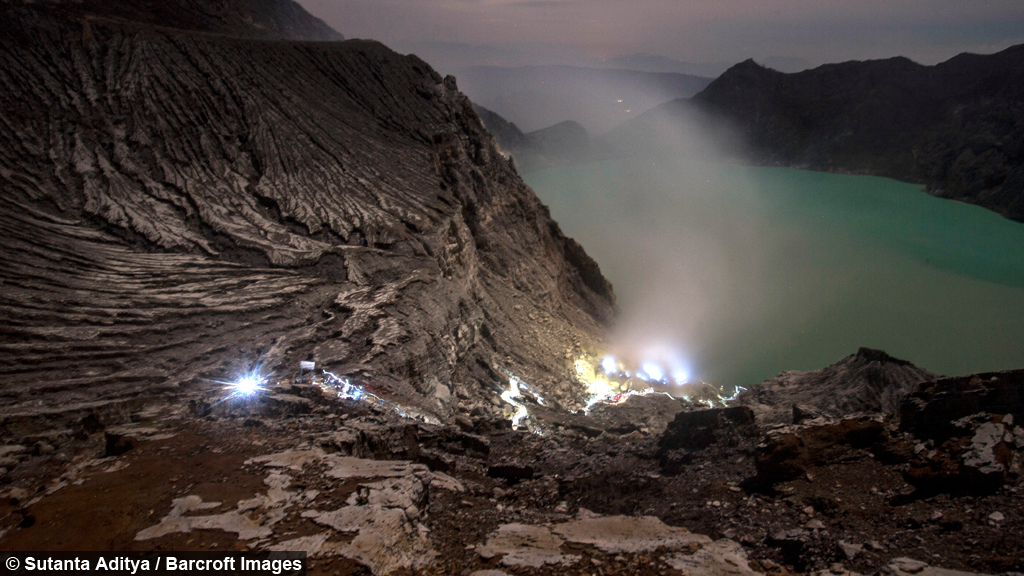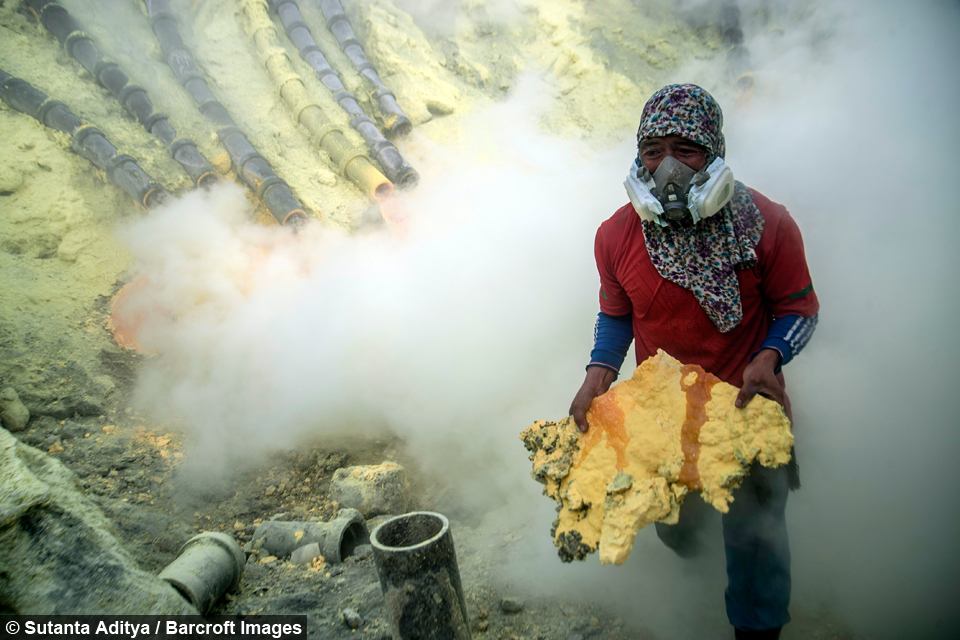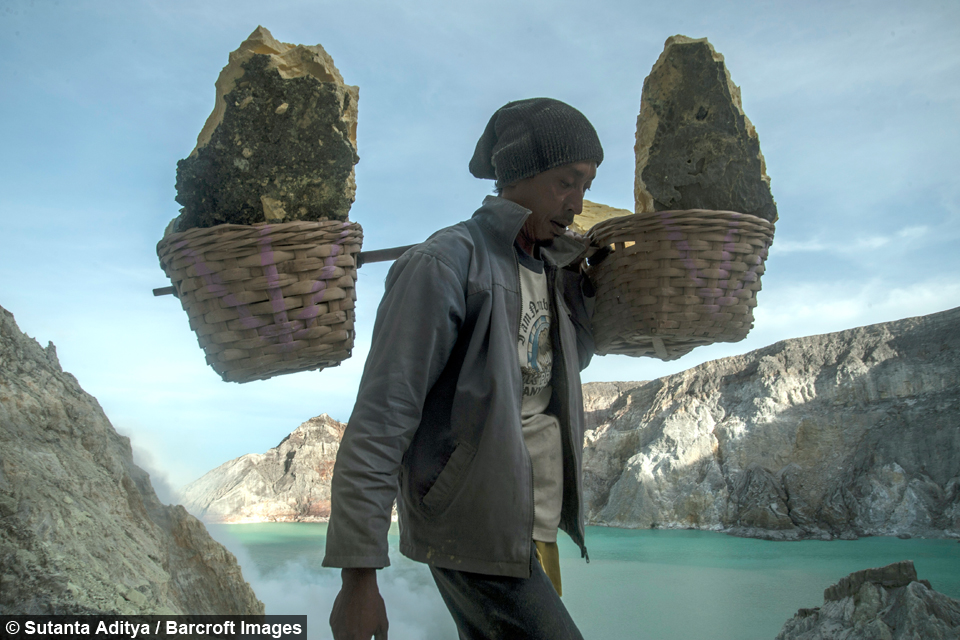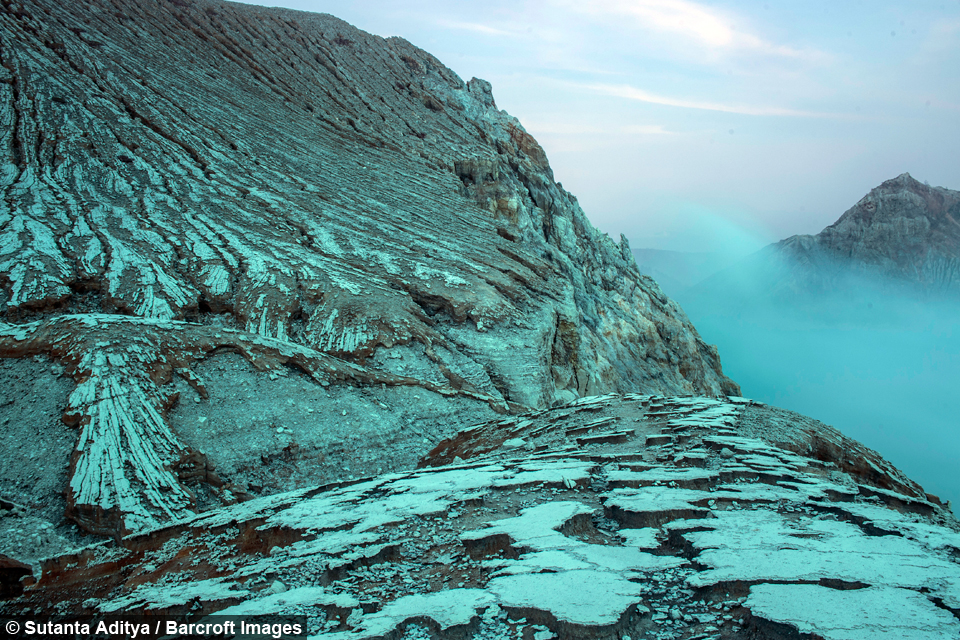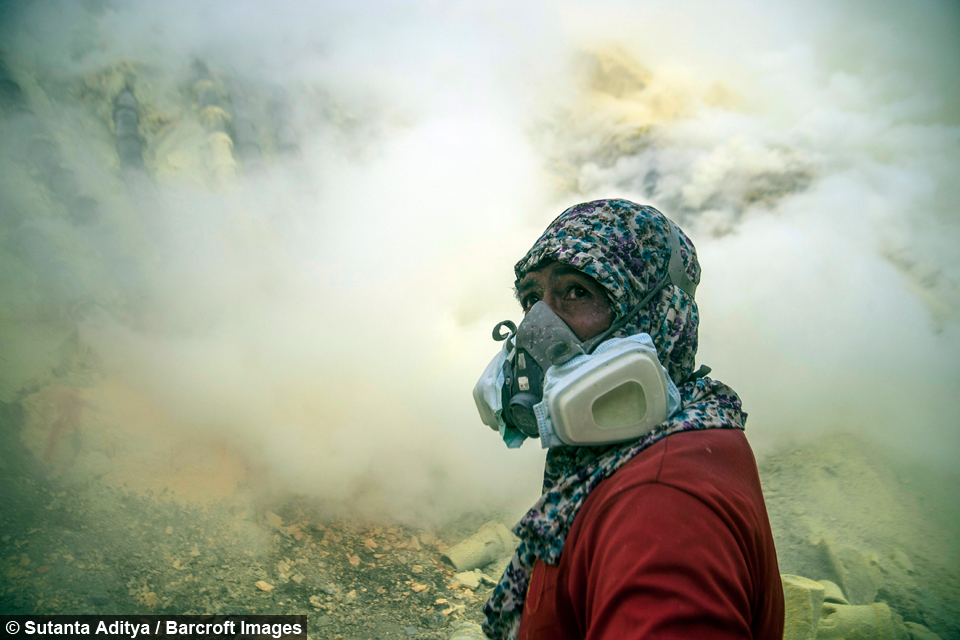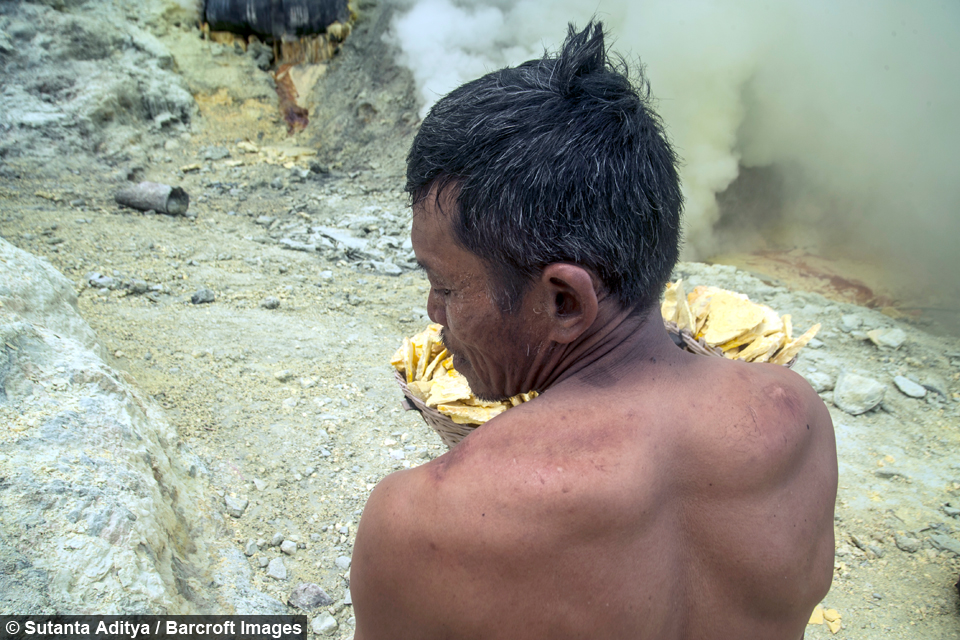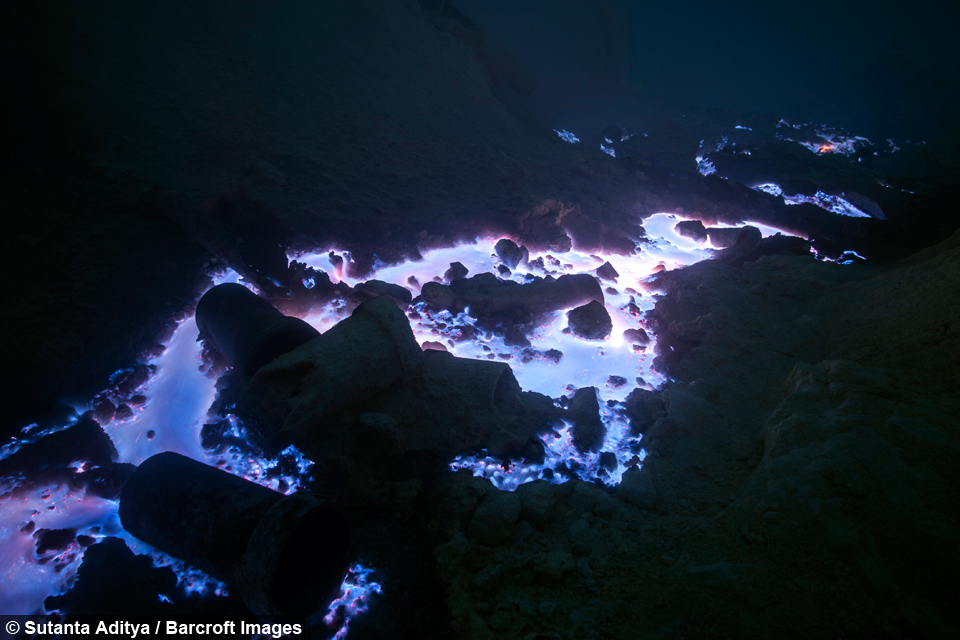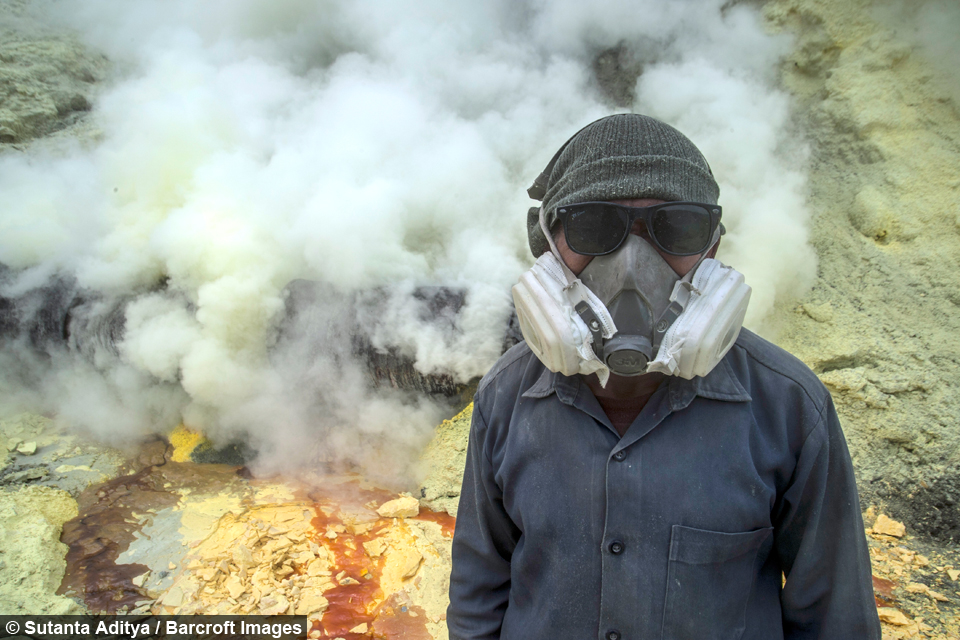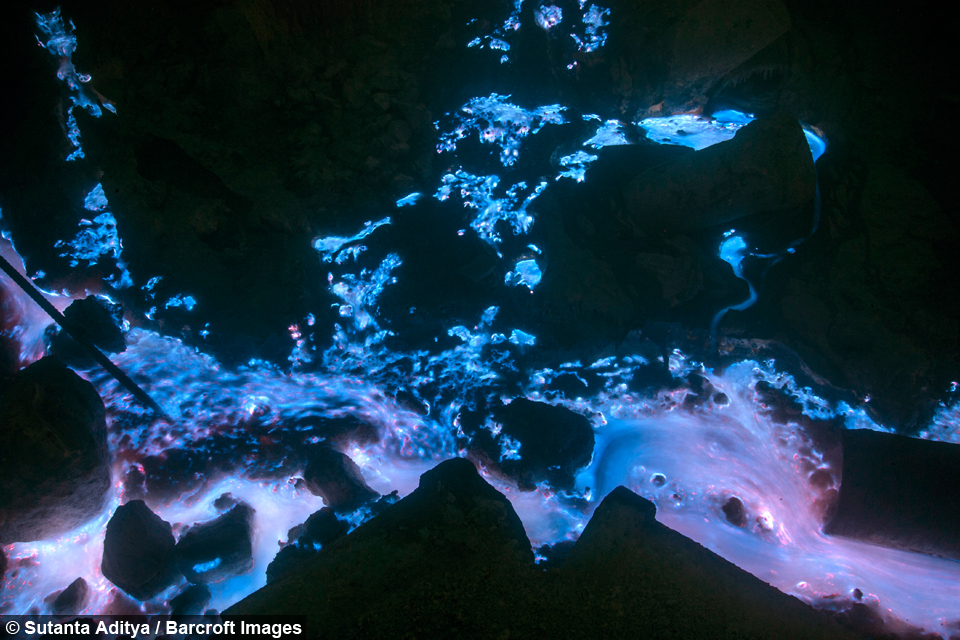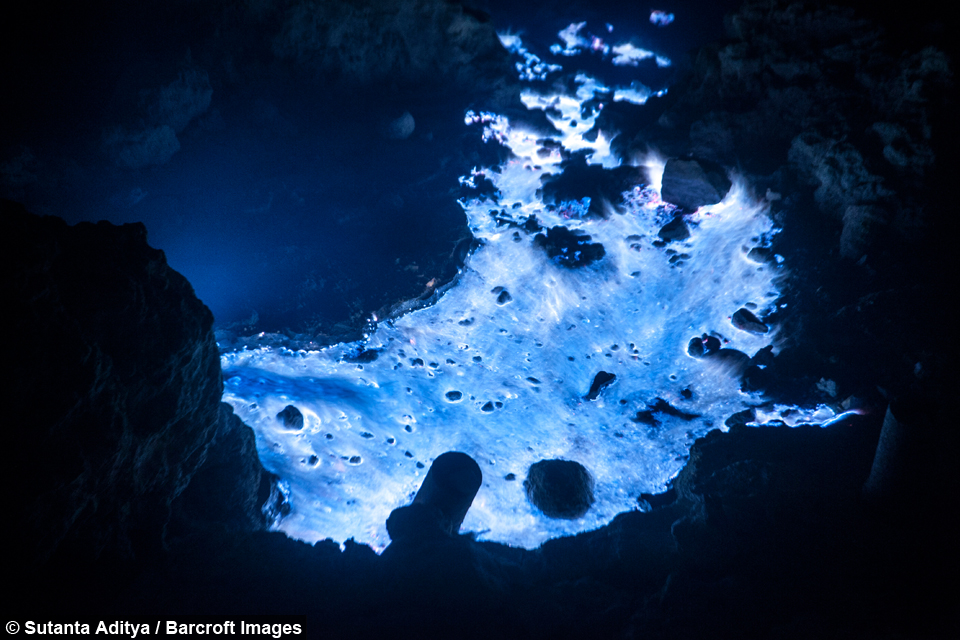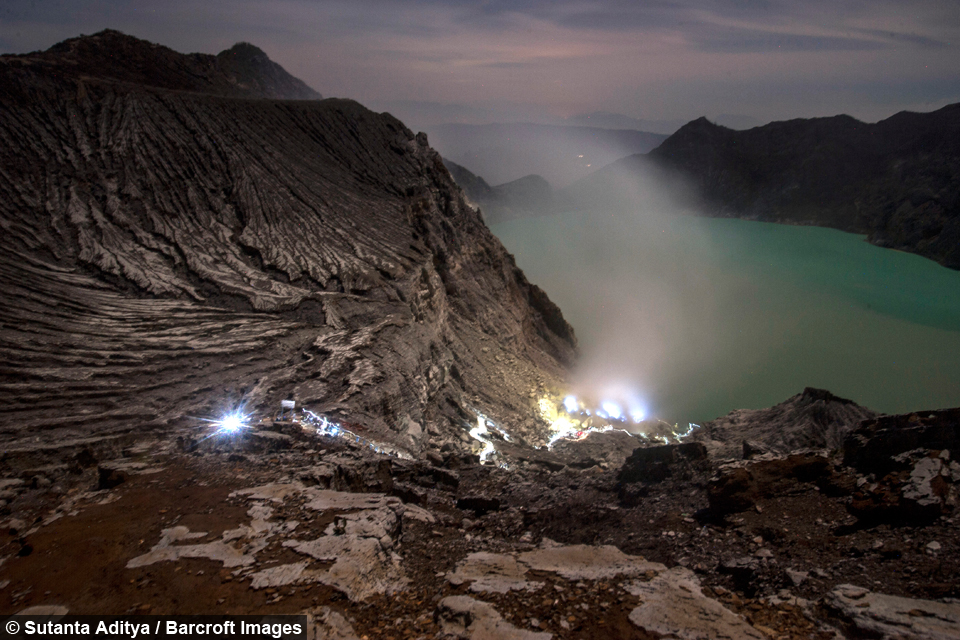Tough miners dig for sulphur on active volcano
By Bunmi Adigun @Bunmi_Adigun
Scroll down for the full story
The mine which is located by a crater lake on the Ijen volcano, Indonesia, serves as a vital source of income for people in the area.
Photographer Sutanta Aditya, from Indonesia, took the powerful images on his most recent visit to the volcano.
He said: “I wanted to show how humans can coexist with volcanoes and adapt.”
Despite the obvious health risks, the miners hike to the lip of the crater everyday to begin their aduous journey down to the bank of the crater lake where the sulphur is dug up.
Without the use of any specialised equipment, the brave men use simple iron rods to chip away at the chunks of solidified sulphur and pack it into baskets to carry back up.
At more than 2,000 metres above sea level, breathing on the volcano is made even more difficult due to thick fog caused by the gas, however many of the miners work through it with only a piece of cloth to cover their mouths.
With each load weighing anywhere from 75 - 100 kilograms, the miners are expected to carry the sulphur 800 metres from the crater lake out of the crater on a steep trail.
“Miners do this for the sake of a better life and - in one day - make the journey two times, back and forth all to help sustain their families,” Sutanta added.
On average each miner makes 925 rupiah per kilogram which amounts to around 7 cents a kilo.
Although the amount seems like a mere pittance in comparison to how much work they do, a miner can take home up to $14 a day compared to farmers who are paid a lot less.
Sulphur is then taken to nearby make-shift factories to be separated from the rock and is used for everyday items such as soap and cosmetics.
As well as breathing in toxic fumes the miners also have to be wary of the fact that the volcano is still active and can be unpredictable at times. The last eruption at the volcano happened in 1952.
Sutanta said: “In April 2014 the volcano ejected gas and catapulted things in the air, which destroyed the mining area and caused three people to faint due to the toxic gasses.”
With toxic fumes bellowing around the crater and a lake that is highly acidic it’s hard to believe that the volcano is actually a top tourist destination in the area.
Every evening visitors to Ijen are treated to a light show as ignited sulphuric gas emerges from the cracks of the volcano to the surface giving off a blue flame and rising up to 16 feet in the air.
This natural phenomenon is one of the top draws to the region.
